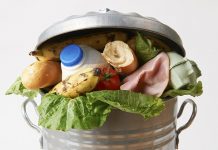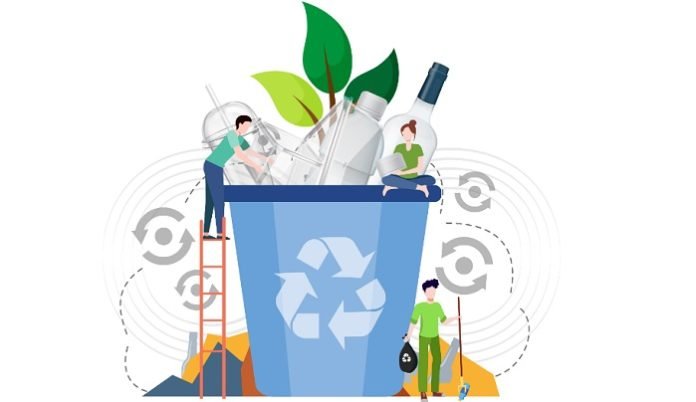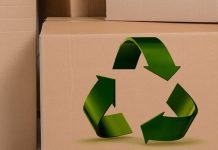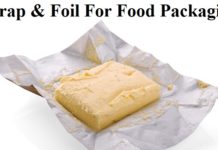The Council presidency as well as the European Parliament’s representatives have gone on to reach a provisional political agreement on a proposal concerning regulation pertaining to packaging and packaging waste. The objective is to tackle the rise in terms of packaging waste generated in the EU, while at the same time harmonizing the internal market in terms of packaging and boosting the circular economy.
The proposal goes on to consider the full life cycle when it comes to packaging. It goes ahead and establishes needs to make sure that packaging is safe as well as sustainable, by way of requiring that all packaging happens to be recyclable and that the presence of substances of concern has been minimized. Apparently, it also lays down labeling harmonization needs so as to improve consumer information. In sync with waste hierarchy, the proposal looks forward to decreasing formidably the generation of packaging waste by way of setting binding re-use aims, making sure to restrict certain kinds of single-use packaging, and also requiring economic operators so as to minimize the packaging used.
The deal that has been reached is provisional, thereby pending formal adoption by both institutions.
The Main Fundamentals of The Agreement
Sustainability requirements as well as recycled content in packaging
The text with regards to the provisional agreement goes ahead and at the same time also maintains most of the sustainability needs for all kinds of packaging placed within the market as well as the headline targets as proposed by the Commission.
It also enables to strengthen the requirement for substances within the packaging by putting forth a restriction on the placing on market of food contact packaging containing per- and polyfluorinated alkyl substances- PFASs above certain standards. So as to avoid any kind of overlap with other pieces of legislation, co-legislators happened to task the Commission by way of assessing the requirement so as to amend that restriction within four years from the date of application of the regulation.
Notably, the provisional agreement goes ahead and maintains the 2030 and 2040 headline targets for a minimum recycled content in plastic packaging. The co-legislators went ahead and agreed to exempt compostable plastic packaging as well as packaging whose plastic components go on to represent less than 5% of the packaging’s total weight from those objectives. Apparently, the Commission will have to review the execution when it comes to the 2030 targets and also assess the feasibility as far as the 2040 targets are concerned. The agreement also goes ahead and calls on the Commission to evaluate, three years following the entry of regulation, the state of technological development of bio-based plastic packaging and, on the scenario of that assessment, to lay down sustainability needs for bio-based content within plastic packaging.
The new rules would go on to lessen the unnecessary packaging by way of setting a maximum empty space ratio of around 50% in group, transport, as well as e-commerce packaging, and needing manufacturers as well as importers to make sure that the weight as well as volume of packaging get minimized, except for the protected packaging designs.
Re-use targets as well as re-fill obligations
The text goes on to set new binding re-use aims for 2030 and also indicative targets for 2040. The targets happen to vary depending on the kind of packaging that’s used by operators, be it alcoholic and non-alcoholic beverages, excluding wine as well as aromatized wines, milk, and other highly perishable beverages, transport along with sales packaging, which excludes packaging used in terms of dangerous goods or large-scale equipment; flexible packaging in direct contact with food, and grouped packaging. Cardboard packaging happens to be generally exempt from those needs.
The agreement goes on to introduce a general renewable five-year derogation from attainment of the reuse objectives under specific conditions that include:
• The exempting member state goes ahead and exceeds by 5 percentage points the recycling targets to be achieved by 2025 and is anticipated to surpass by 5 percentage points the 2030 recycling objectives.
• The exempting member state happens to be on track so as to achieve its waste prevention targets.
• The operators have gone on to adopt corporate waste prevention as well as recycling plans that go ahead and contribute in order to achieve the waste prevention as well as recycling objectives set out within the regulation.
The new rules also go ahead and exempt micro-enterprises from getting those targets and also introduce the probability for economic operators to go ahead and form pools of up to five final distributors in order to meet the re-use targets as far as the beverages are concerned.
The co-legislators went ahead and laid down an obligation for take-away businesses so as to offer customers the probability of bringing their own containers to be filled with either cold or hot beverages or ready-prepared food, and that too at no additional charge. Moreover, by 2030, take-away activities must endeavor to give out 10% of products in packaging formats that are suitable for re-use.
Deposit return systems- DRS
It is well to be noted that under the new rules, by 2029, member states must go on to ensure the separate collection of almost 90% per annum of single-use plastic bottles as well as metal beverage containers. To achieve the target, they are needed to set up deposit return systems- DRSs when it comes to those packaging formats. The minimum requirements for DRS won’t be applied to systems that are already in place before the entry into force of regulation if the systems question go on to achieve the 90% target by 2029.
Apparently, the co-legislators went ahead and agreed to add an exemption from the need so as to introduce a DRS for member states if they would go on to reach a separate collection rate of more than 80% in 2026 and if they submitted an execution plan with a strategy so as to achieve the overarching 90% separate collection objectives.
Restrictions within certain packaging formats
The new rules go on to introduce restrictions on certain packaging formats, like single-use plastic packaging pertaining to fruit and vegetables, for food as well as beverages, condiments, and sauces that happen to be in the HORECA sector, for small cosmetic as well as toiletry products that are used in the accommodation sector, such as shampoo or body lotion bottles, and for very lightweight plastic bags, such as those offered at markets when it comes to bulk groceries.
Further Steps
It is well to be noted that the provisional agreement will now be submitted to the member states’ representatives in the Council and to the Parliament’s environment committee as far as the endorsement part is concerned. If approved, the text will then need to be formally adopted by both institutions, thereby following a revision by lawyer-linguists, before it can get published in the EU’s Official Journal and also enter into force. Notably, the regulation will be in effect for 18 months from the date of entry into force.
Background
It is worth noting that packaging production as well as packaging waste management happen to be an economically complex as well as important sector, which goes on to generate a total turnover of €370 billion across the EU. As such, it happens to play a pivotal role and has the potential to put Europe into a clean, sustainable, and circular economy, which is in sync with the European Green Deal. But even though recycling rates have gone on to increase in the EU, the amount of waste that gets generated from packaging happens to be growing faster than the actual amount that is recycled. Across the past decade, the packaging waste amount has increased by almost 25% and is anticipated to surge by another 19% by 2030 if no action that’s taken. In the case of plastic packaging waste, the anticipated increase is 46% by 2030.
The present EU packaging as well as packaging waste directive was first embraced in 1994 and has since been revised several times. It lays down guidelines for the EU member states so as to make sure that the packaging placed on the EU market goes ahead and meets certain requirements and embraces measures in order to prevent and manage packaging waste, which then helps to achieve recycling targets for varied kinds of packaging waste. But several assessments of the directive have shown that it hasn’t succeeded in terms of reducing the negative environmental impacts that packaging has.
It is well to be noted that, against this backdrop, in November 2022, the Commission went ahead and put forward a proposal for regulation on packaging as well as packaging waste that could go on to replace the present directive.























